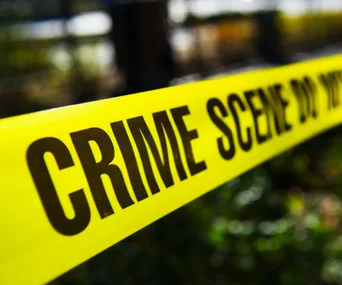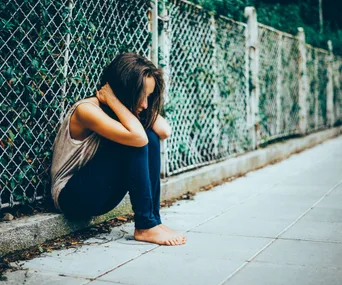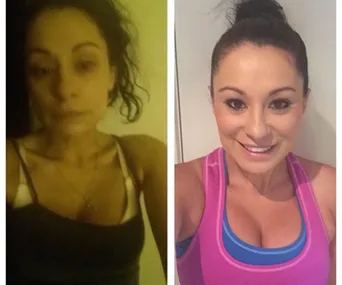Australia’s ice epidemic causes heartache not only for users and their families, but also the innocent people who inadvertently move into homes once used as illegal drug labs, writes Sue Smethurst…
Imagine you’ve purchased your dream home, a sprawling country property for a tree-change, with greens hills for the kids to run free, clean air to fill their lungs and a rambling old house to renovate into a forever family home.
Yet soon after you move in, the kids start getting sick, really sick. They have trouble breathing and sleeping, they’re constantly cranky and their skin is breaking out in rashes.
You beat a path to the local doctor’s surgery, but no one can really offer an explanation for the symptoms until there’s a knock at the door one day from the shire council.

Cleaning up meth labs in public housing cost the Queensland government $600,000 over three years. PHOTO: Nick Cubbin
They have come to notify you that your new home was previously a clandestine meth lab and your children are, in fact, showing levels of methamphetamine in their system akin to that of an adult drug user. They are unwitting ice addicts.
It could be a scene straight out of Breaking Bad, but this is a living nightmare for one eastern Victorian family, whose $500,000 country home was so seriously contaminated with the residue of methamphetamine that it may have to be knocked down – and they had no idea they were living in an ice lab.
“For this particular family, who asked not to be identified, this has been devastating, but they’re not alone,” says Flinders University academic and lecturer Dr Jackie Wright, who has completed a PhD on the health effects of clandestine meth labs. “I’ve met many families in the same circumstances,” she says. “People are getting sick because of the invisible toxins from ice. This is a big problem in Australia, more widespread than we realise. We should be as aware of this as we are the effects of asbestos and lead paint.”

PHOTO: Getty.
Cooking up a toxic soup
In Australia last year, police busted hundreds of clandestine meth labs, pockets of space used by drug dealers to “cook” up a blend of toxic chemicals, such as drain cleaner, fertilizer and acetone, into the nation’s most popular street drug, ice.
In the past, making ice was a large-scale production, giving off such foul-smelling odours that drug dealers targeted remote and rural homes to set up their labs, but not anymore.
As ice addiction reaches epidemic levels in Australia, dealers have streamlined their methods of making the drug, meaning any suburban kitchen, bathroom, garage or even a space as small as a cubbyhouse, can become a meth lab, with devastating effect.
“It’s such a toxic and powerful drug that the residue seeps into any porous surface – carpet, curtains, plaster, even the timber frames of homes,” says Dr Wright. “The impact is profound, from headaches and sleep deprivation to respiratory problems, asthma and eye complaints. Some homes may have to be demolished because they can’t be decontaminated.
“We are seeing more and more people who have moved into homes without knowing they were once used as a drug lab become sick. Even people who don’t use ice themselves but share homes with ice users are becoming sick.”
For Josh Marsden, Managing Director of Meth Lab Cleaners Australia, business is booming.
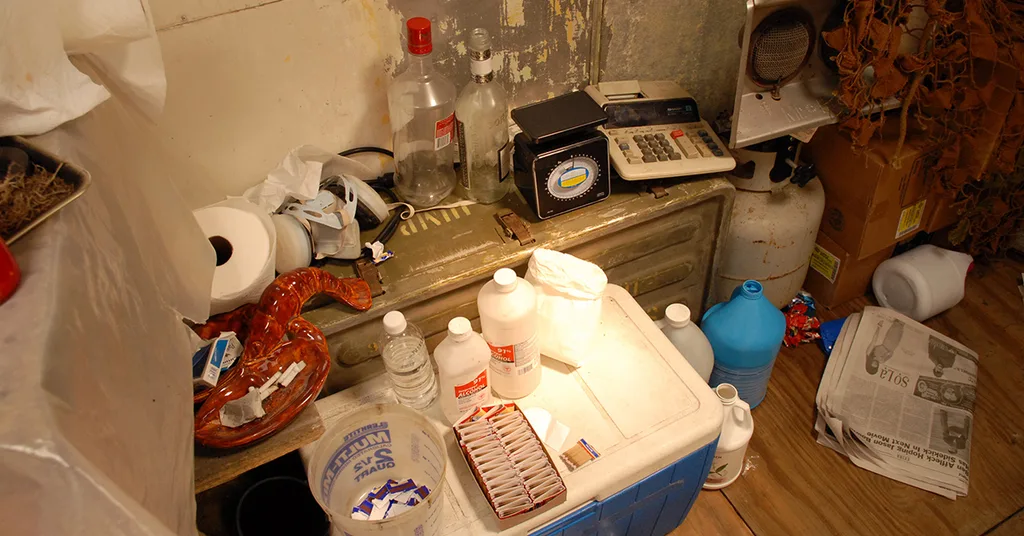
PHOTO: Getty.
He has decontaminated more than 80 clandestine meth labs in homes around Australia.
“We started our company to do forensic and trauma scene cleaning, but the need for cleaning up meth labs has outstripped that and it’s consuming our business,” he says. “There’s no way I’d buy a house or rent a house in Australia without testing for meth first.”
Josh’s company has been involved with the clean-up of the rural Victorian property mentioned earlier. He was shocked when he visited the farm to test the levels of contamination.
“It probably can’t be remediated because there was meth residue everywhere,” he says, “even in the sheds because the cooking was happening there, too, so they may have to demolish everything and rebuild.
“They don’t want anyone to know who they are because it could impact their kids at school, and their property is currently worthless. They are devastated and embarrassed, but it’s not their fault. When the family inspected the home to purchase, it looked just like any normal home. Often just from looking you can’t tell. Homes need to be properly tested.”
Sadly, Josh says this is becoming an all too familiar scenario. “We’re seeing families sick and suffering because of this,” he says. “There’s so much ice use in the community, particularly in rural areas, that soon cleaning up meth labs will be as common as pest control.”
Hundreds of labs
Last year, the Australian Crime Commission reported that police busted 744 clandestine meth labs across Australia. NSW Police say that they see at least six to 10 homes demolished as a result of contamination each year, while Queensland holds the dubious honour of being the country’s leader in methamphetamine production, with more meth labs uncovered than any other state. Cleaning up meth labs in public housing cost the Queensland government $600,000 over the past three years.
“Methamphetamine poses by far the greatest threat to the Australian public of all illicit drug types, by a significant margin,” warns Chris Dawson, CEO of the Australian Criminal Intelligence Commission.
He says recent wastewater analysis (yes, sewerage tests) across Australia revealed meth use is much higher than previous studies have determined, particularly in the coastal urban areas of Queensland and southern Queensland, and South Australia.
Mr Dawson says there are tell-tale signs that a house is being used as a clandestine lab. Neighbours should look out for strong odours, diverted electricity, chemical containers and waste around the property, blacked- out windows, hoses or pipes in strange places, blinds always down and cars arriving and leaving at strange hours.
“Clandestine labs are dangerous and pose a significant risk to the community,” he says.
“Operators of these labs manufacturing drugs often have little concern for the environment or public and manufacture in these labs has resulted in explosions, which have severely damaged properties and resulted in serious injury and death. These labs are often located in residential areas and pose a risk to the surrounding community.”
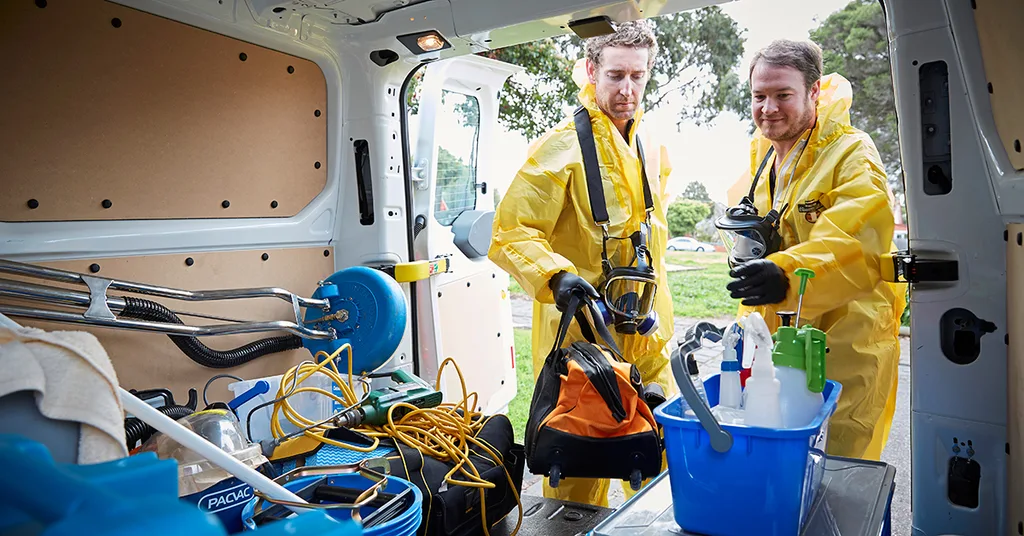
Business is booming for Josh Marsden (below, left) and the crew from Meth Lab Cleaners Australia, which has decontaminated 80 former labs. PHOTO: Nick Cubbin
In the US, authorities have long been aware of the dangers of living in meth labs, particularly for children.
The US Office of Justice Programs has issued widespread alerts, warning that exposure to even the lowest levels of methamphetamine can result in headache, nausea, dizziness and fatigue, while exposure to high levels can cause shortness of breath, chest pain, eye and tissue irritation, chemical burns to the skin and even death.
Hundreds of cases of illness have been reported by families affected by ice contamination and sickening pictures of children with skin abrasions and rashes were recently published in the New York Daily News.
Many families have come forward sharing horrifying stories of the effects of contamination.
The Holt family of Indiana spent five years going back and forth to the local hospital with their three children, who had developed severe breathing problems after they moved into their dream home.
The children became so sick, they needed respirators to breathe. They discovered their attic had been used as a meth lab. Health inspectors also found high concentrations of meth on the kitchen benchtops where Rhonda Holt had prepared her children’s food.
“We bought a house that eventually was going to sentence our family to death,” she told The New York Times.
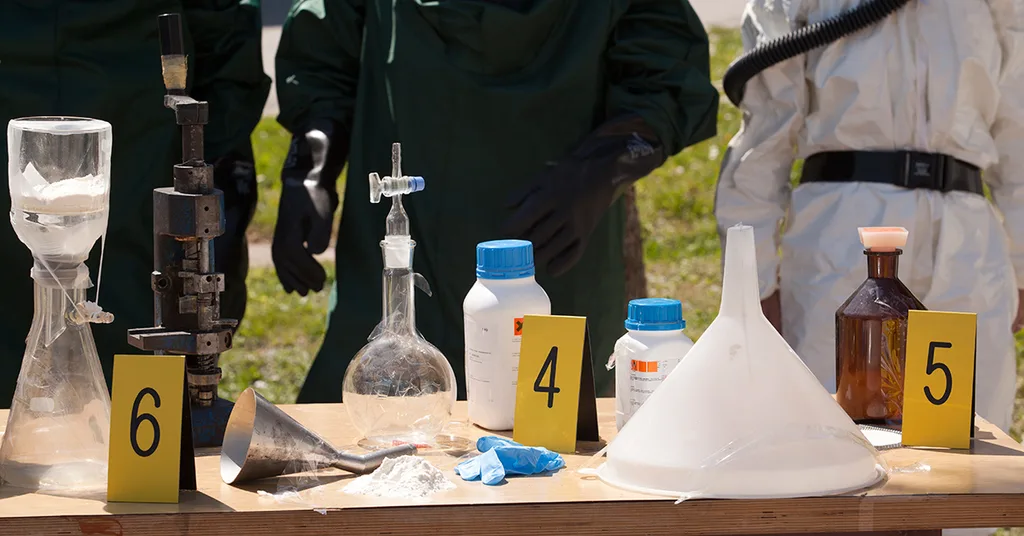
PHOTO: Getty.
In Australia, we’re only beginning to scratch the surface of the problem. Despite the epidemic of ice, we’re yet to regulate the remediation of properties, nor adequately warn the public of the risk.
A 2007 study by the National Jewish Health and Research Center in Denver found that living in a former meth lab made children more likely to develop learning disabilities and caused long-term respiratory and skin problems. The Denver study also found that more than 70 per cent of police and law enforcement officers who inspected meth labs subsequently reported health problems.
“We’re only just being to see how widespread this is,” says Dr Jackie Wright, who spoke with an extensive list of case studies for her PhD, all on the condition of anonymity. She interviewed the Victorian family, who are now suing the shire council for the clean-up costs.
“They did all of the usual pre-purchase checks and everything was fine, but within a week of moving in, the kids began getting sick. It’s been devastating for them,” says Dr Wright.
“One of my case studies is a single mum of two who moved into a rental property, which had been used as a clandestine lab. Her neighbours knocked on her door to tell her they were suspicious of the previous tenants. She paid for testing and the levels of meth residue were significant, so she moved out.
“Another lady in her 50s bought an investment property to renovate. When she started pulling things down, she created dust laced with traces of meth. She became quite sick and had to move out. She’s still sick and it’s been several years since she moved.”
Cleaner Josh Marsden is pushing for government to legislate for mandatory testing of all properties for sale or rent by real estate agents.
“Consumers should know what they are buying or renting,” he says. “At the moment, people are largely unaware until it’s too late and there’s no clear cut avenue for responsibility and reporting. We know how toxic ice is and we know how big the problem is – innocent people are getting sick because they simply don’t know they’re living in a former meth lab.”
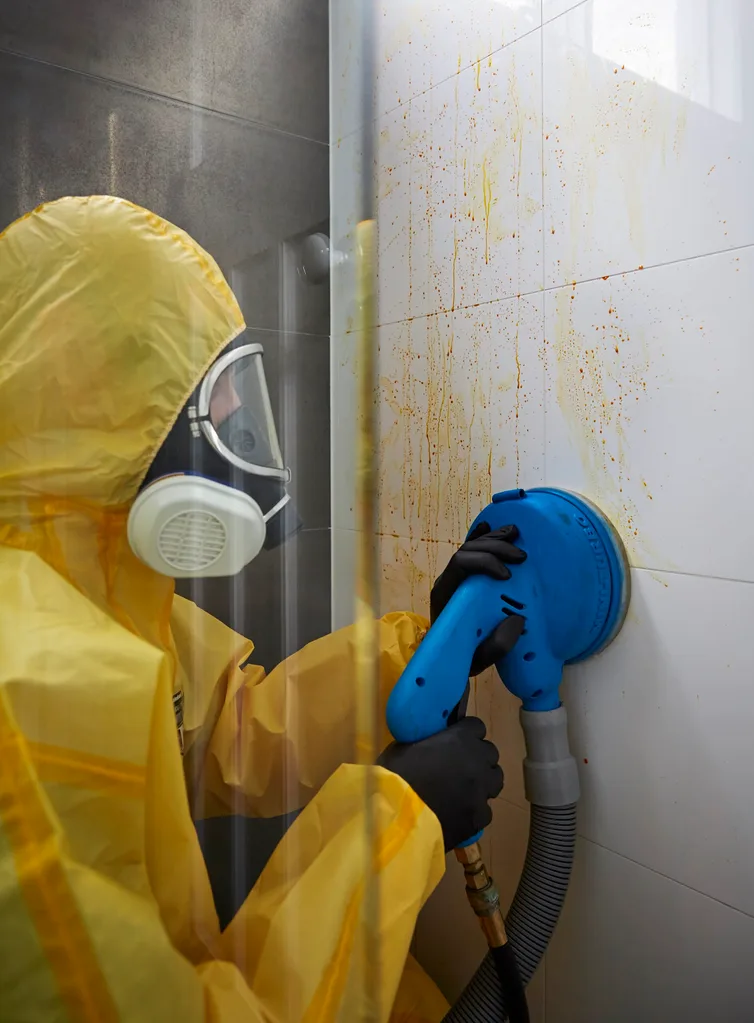
The cleaners are shocked by the former drug lab contamination levels. The labs (right) use toxic chemicals such as acetone and drain cleaner. PHOTO: Nick Cubbin
Worthless and abandoned
Cleaning up a home that’s been used as a meth lab can cost anything from $25,000 to $100,000 and its unwitting owners and landlords who are often left with the bill.
In New Zealand, the issue is being hotly debated in parliament with some MPs calling for mandatory testing of every home prior to purchase or lease.
Kiwi grandmother Kerryanne Hopkins is leading the fight. She discovered her home had been a meth lab when she began renovating.
“There was crystal residue all over the bedroom walls, so I’d say the addicts used to sit in bed and smoke meth,” she says.
She spent about 80 hours cleaning the property, but tests still showed residue. She can’t sell the house and can’t afford to pay the $25,000 clean-up costs. She no longer lets visitors come to the house, including her grandson, and is considering walking away from the property.
“I will never buy a property again without doing a meth check on it.”
Twenty years ago, Dr Jackie Wright began her career in environmental sciences, studying contaminated soil, pollution and pesticides in food. She never imagined she’d end up studying the impacts of ice. During the course of her research, which took five years, she spent time in jail interviewing convicted meth cooks and had a unique excursion with the United States Drug Enforcement Agency.
“We worked with detectives in California in a simulator lab cooking up meth so we could understand the process, the chemicals and how the vapour extracts and dissipates so we could understand how it contaminates,” she explains. “It was surreal, like a scene from Breaking Bad, but eye opening. We only made a tiny quantity, but I still threw out all of my clothes and things afterwards because I was so worried about going through the airport scanner.”
Dr Wright’s research will hopefully form the basis of national guidelines for identifying the public health risks of meth labs and the remediation of properties affected, but she says there’s still much we don’t know about the long-term effects of ice.
“Ice has a major impact on our community at different levels,” she says. “We need to make this a priority. People are getting sick and they may not have any idea why.”
The Facts
Cleaning up a home that’s been used as a meth lab can cost anything from $25,000 to $100,000.
Cleaning up meth labs in public housing cost the Queensland government $600,000 over three years.
NSW Police see at least six to 10 homes demolished as a result of contamination each year.
A version of this article appeared in the November 2016 issue of The Australian Women’s Weekly


